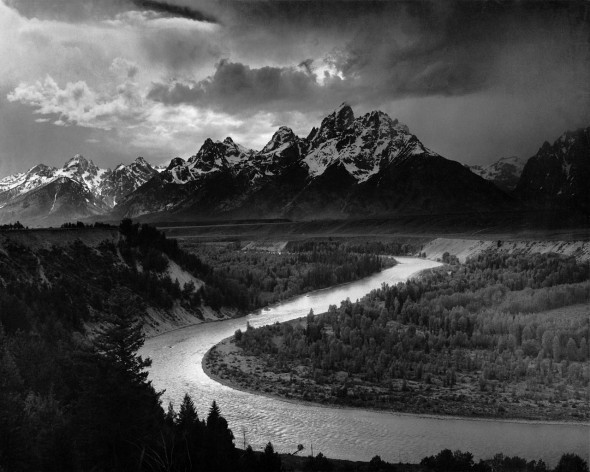Ansel Adams would have turned 111 today. In 1983, a year before the legendary photographer died, he caught a glimmer of the coming digital revolution. "I am sure the next step will be the electronic image, and I hope I shall live to see it," he said. "I trust that the creative eye will continue to function, whatever technological innovations may develop." Although not a witness to technological change, he left more than his photographs behind. The Zone System Adams developed with Fred Archer to determine exposure by assigning and controlling tonal values to subjects in a scene is still part of many a cinematographer's toolkit, whether they are shooting 35mm or digital formats. This crucial visualization of the scene translates a director's vision through the lens.
Adams's photographs bristle with movement and story, conveying both a singular moment in time and the ancient history of the landscape before him. Trained as a concert pianist who discovered photography by recording favorite locations, Adams's relationship with his surroundings went much deeper than the eye, though the clarity of his subjects made him a documentary photographer of the highest order. A founder of the short-lived Group f/64 with Edward Weston and others that aimed to shoot the world simply "as it is," Adams used depth of field and careful exposure to contain larger-than-life scenes in a single frame.
Adams, however, brought something more than realism to his images. "If I feel something strongly," he said famously, "I would make a photograph that would be the equivalent of what I saw and felt. When I'm ready to make a photograph, I obviously see in my mind's eye something that is not literally there. I'm interested in expressing something which is built up from within, not extracted from without."
You can see the great man in the context of his grand subjects and his art in Ansel Adams, A Documentary, which first aired in 2002 on PBS's American Experience. The full program is below.
Did you enjoy this article? Sign up to receive the StudioDaily Fix eletter containing the latest stories, including news, videos, interviews, reviews and more.

